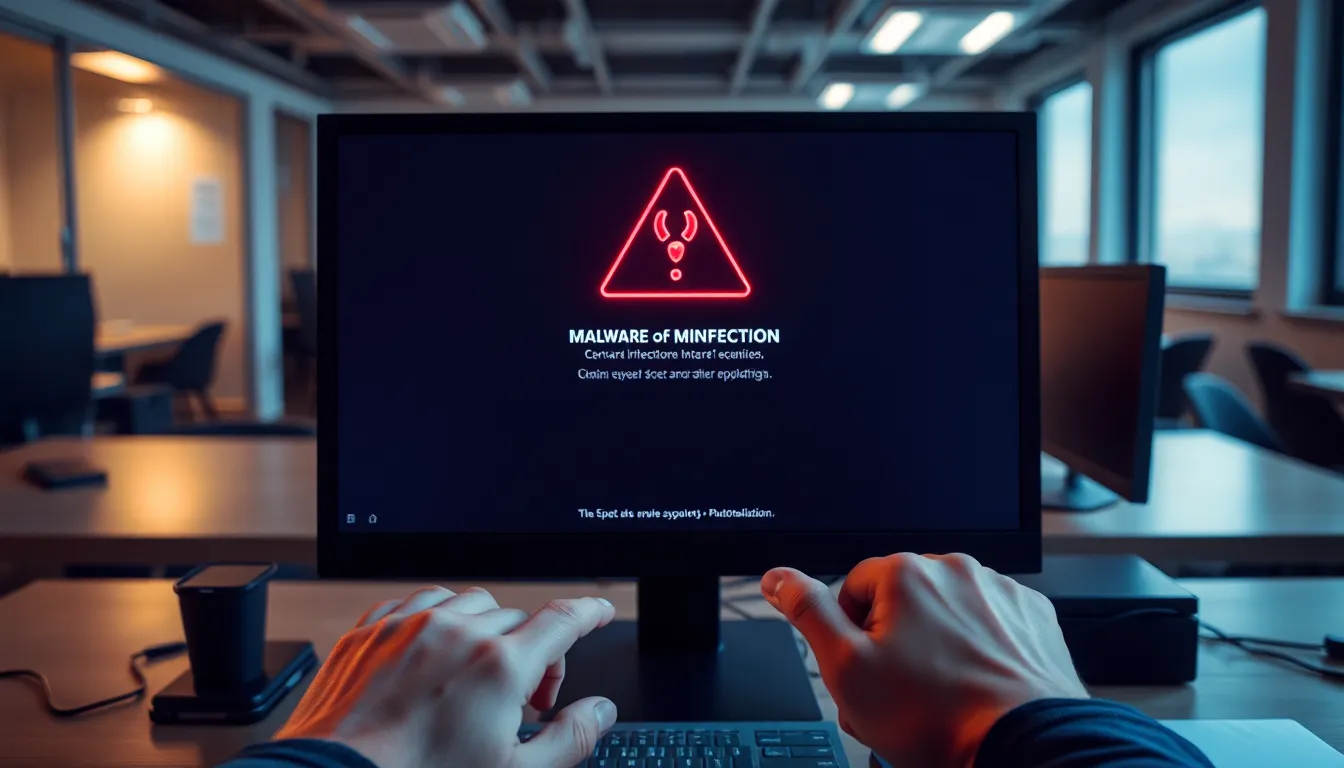Table of Contents
ToggleIn today’s digital landscape, cyber threats loom larger than ever, posing significant risks to individuals and organizations alike. As technology evolves, so do the tactics of cybercriminals, making it crucial for everyone to stay informed and vigilant. From data breaches to ransomware attacks, the spectrum of threats is vast and ever-changing.
Understanding the nature of these threats is essential for effective prevention and response. With the rise of remote work and increased reliance on digital platforms, the potential for cyber attacks has skyrocketed. This article delves into the various types of cyber threats, their impact, and the strategies that can mitigate risks, ensuring a safer online experience for all.
Understanding Cyber Threats
Cyber threats encompass a range of malicious activities targeting individuals and organizations in the digital realm. Recognizing these threats aids in developing effective countermeasures.
Definition of Cyber Threat
A cyber threat refers to potential malicious attempts to access, damage, or steal data from a computer system or network. Cyber threats exploit vulnerabilities in technology, software, or user behavior. Examples include malicious software, unauthorized access attempts, and phishing attacks.
Types of Cyber Threats
Cyber threats manifest in various forms, each posing unique challenges. Key types include:
- Malware: Malicious software like viruses, worms, and Trojans that disrupt, damage, or gain unauthorized access to systems.
- Phishing: Deceptive emails or messages tricking individuals into revealing sensitive information.
- Ransomware: Malicious software holding data hostage for ransom, often crippling organizational operations.
- Data Breaches: Unauthorized access to confidential data, typically resulting in data theft and unauthorized use.
- Denial of Service (DoS): Attacks aiming to overwhelm systems, leading to service unavailability and disrupted operations.
- Man-in-the-Middle (MitM): Interceptions occurring during communication sessions, allowing attackers to steal information without detection.
- Insider Threats: Security breaches originating from individuals within an organization, either intentionally or unintentionally compromising security.
Understanding these types of cyber threats is crucial for implementing appropriate security measures and protecting digital assets.
Common Cyber Threat Techniques

Cyber threats use various techniques to compromise systems and data. Understanding these methods aids in implementing effective security measures.
Malware and Ransomware
Malware includes harmful software designed to disrupt, damage, or gain unauthorized access to computer systems. Types of malware encompass viruses, worms, spyware, and trojans. Ransomware, a type of malware, encrypts files and demands payment for their release. For instance, the WannaCry ransomware attack in 2017 affected hundreds of thousands of computers globally, demonstrating the severe impact of such threats.
Phishing Attacks
Phishing attacks involve fraudulent communications, typically via email, that appear trustworthy. Attackers often seek sensitive information, such as login credentials or financial details. Spear phishing, a targeted form of phishing, focuses on specific individuals or organizations. Statistically, 90% of data breaches result from phishing, highlighting its prevalence and effectiveness in cyber threats.
Denial of Service Attacks
Denial of Service (DoS) attacks aim to make a service unavailable by overwhelming it with traffic. Attackers utilize botnets—networks of compromised devices—to increase the attack’s scale. For example, the 2016 Dyn DDoS attack severely affected major websites by targeting the domain name system, showcasing the disruptive potential of these attacks.
Analyzing the Impact of Cyber Threats
Cyber threats have substantial implications, affecting finances and reputation. Understanding these impacts proves vital for organizations and individuals navigating today’s digital landscape.
Financial Consequences
Cyber threats result in significant financial burdens. The global cost of cybercrime reached $6 trillion in 2021, with projections estimating it may exceed $10 trillion by 2025. Organizations face costs related to data recovery, legal fees, and regulatory fines. Ransomware attacks cost businesses, on average, $1.85 million per incident. Additionally, the 2020 reports indicated that 20% of small businesses fall victim to cyberattacks, leading to potential closure within six months due to financial strain.
Reputational Damage
Reputational damage from cyber threats poses long-term consequences. Companies compromised by data breaches often experience a 30% decline in stock prices immediately following an attack. Customer trust deteriorates after breaches, evident as 81% of consumers become less willing to engage with brands affected by cyber incidents. Recovering from reputational damage demands substantial investment in marketing and public relations efforts, costing organizations up to 45% of their annual revenue in lost customers and trust rebuilding initiatives.
Preventive Measures Against Cyber Threats
Effective preventive measures can significantly reduce the risk of cyber threats for individuals and organizations. Implementing robust strategies ensures that digital assets remain protected from malicious activities.
Implementing Cybersecurity Protocols
Implementing cybersecurity protocols forms the foundation of a strong defense against cyber threats. Establishing multifactor authentication (MFA) adds layers of security, requiring users to provide multiple forms of verification before accessing systems. Regular software updates and patches help fix vulnerabilities, minimizing exposure to exploitation. Additionally, employing firewalls and intrusion detection systems can block unauthorized access attempts while monitoring suspicious activity.
Frequent backups and data encryption provide further safeguards. Backing up critical data ensures recovery in case of ransomware attacks, while encryption protects sensitive information stored on networks. Establishing a comprehensive incident response plan enables organizations to respond swiftly to breaches, enhancing recovery efforts and minimizing damage.
Employee Training and Awareness
Employee training and awareness play pivotal roles in combating cyber threats. Regular training sessions educate employees on identifying phishing attempts and suspicious activities. Conducting simulated phishing exercises enhances awareness, making employees more vigilant against deceptive strategies that cybercriminals employ.
Incorporating security best practices, such as recognizing weak passwords and securing personal devices, fosters a security-conscious culture. Ensuring that employees understand their role in maintaining cybersecurity further strengthens defenses. Encouraging open communication about potential threats allows for faster reporting and response to incidents, maintaining a proactive stance against cyber risks.
Cyber threats are an ever-evolving challenge that demands constant attention and proactive measures. As technology advances cybercriminals become more sophisticated in their tactics. Individuals and organizations must prioritize cybersecurity to safeguard sensitive information and maintain trust.
Implementing robust security protocols and fostering a culture of awareness can significantly reduce vulnerabilities. Regular training and updates are essential in staying ahead of potential threats. The financial and reputational stakes are high so investing in cybersecurity is not just a choice but a necessity in today’s digital landscape. By taking these steps they can create a safer online environment for everyone.







